The estimate is a document that contains all the calculations relative to ...
|
|
Foam is an excellent insulation that is often mounted on the outer walls ... |
The parquet board differs from other types of flooring in that it requires to ... |
Roofing with vinyl stripes with your own hands
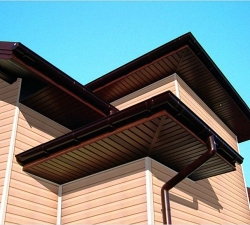
The final stage of construction is work on the roof. Roofing work on the decoration of pediments, cornices are the final chord in the construction site. After completing the work of such a plan, the construction looks complete and aesthetically attractive. The flooring of the roofing material by hearing the cornice, ventilation of the space under the roof and the installation of the gutters are final effects on the roof.
Table of contents:
- Options for roofing materials
- Siding for decoration and roofing
- Advantages and disadvantages of vinyl siding
- Tipping a gable roof
- DIY roof cornices finish
- The decoration of the frontboard of the roof
- Finishing under the roof
- Stamping of the chimney on the roof
- Tips for experienced builders
Options for roofing materials
At the moment, there is a wide variety of roofing materials. To approach the issue of choosing a coating for the roof should be thought out and responsible. It should be high -quality, environmentally friendly, reliable material. What is suitable for a small private house can be inappropriate for city houses, and the material for the roof of a country cottage can differ significantly from the one that is needed for economic construction. Among the abundance of roofing products, one can distinguish the following:
- sheet material;
- metal tile;
- corrugated board for the roof;
- ondulin;
- slate;
- steel folding;
- soft roof;
- flexible tiles;
- sandy cement tiles;
- bulk roof;
- shale material;
- rolled material;
- membrane material;
- siding.
Each of these types of roof covering has strengths and weaknesses. Some elegant and reliable, but very expensive, other cheap and light installation, but require additional insulation. It is necessary to take into account each detail and a feature of the material in order to apply the most suitable in terms of indicators and characteristics, taking into account the type of building, temperature features.
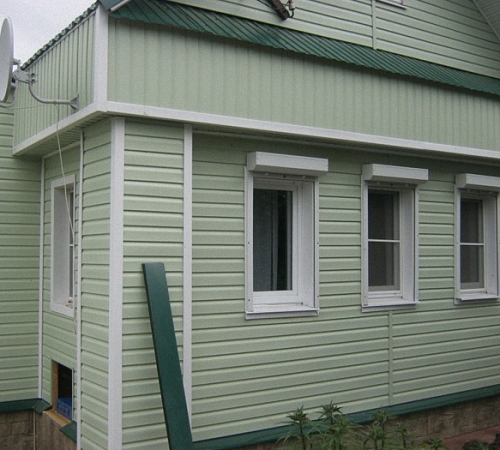
Siding for decoration and roofing
Siding relatively new material, which quickly gained popularity, thanks to its characteristics: practicality, reliability and beauty. The combination of these qualities allows us to argue that this type of roofing material is one of the best solutions for covering buildings and buildings.
Among the positive aspects of the use of siding can be called the following:
- external attractiveness;
- interesting design solutions;
- easy to care;
- easy to mount;
- reliability.
There are many options for this product:
- wood;
- wood;
- vinyl;
- metal;
- steel (galvanized);
- zinc;
- fiber cement.
Wood siding is the result of chips and impregnation with special solutions. It is not suitable for external work, as it has low water resistance. Fiber cement is made of cellulose and cement, non -combustible, but used in some cases due to the large weight of the material. A wooden one is suitable for internal works, dear and complex in mounting, but has a very attractive look. Steel siding and its derivatives are suitable for facing both residential and household premises. The basis of the material is steel covered with special paint. But the recognized leader is vinyl siding.
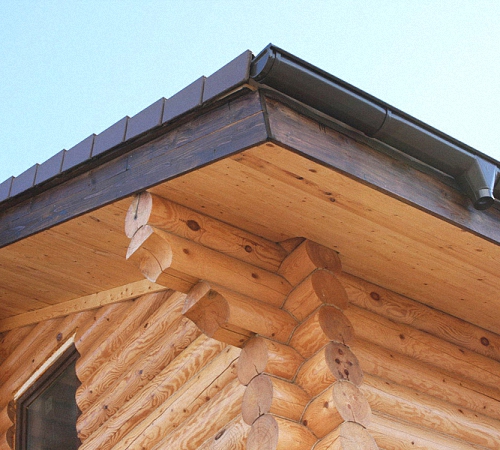
Advantages and disadvantages of vinyl siding
Vinyl siding or as it is also called- acrylic, plastic most popular at this stage. It is attached with self -tapping screws and even a beginner can do it, the most important condition for covering the roof is the absence of fear of height.
Like any other building material, vinyl siding has strengths and weaknesses. The advantages include:
- relatively low cost;
- the ability to self -level with minor dents;
- light weight of the material;
- high mounting speed;
- variety of colors;
- external attractiveness;
- high reliability.
But the disadvantages of vinyl siding include:
- high fire hazard of the material;
- additional thermal insulation is required;
- if individual sections are damaged, the entire coating is required;
- low resistance to mechanical exposure;
- not a very long service life.
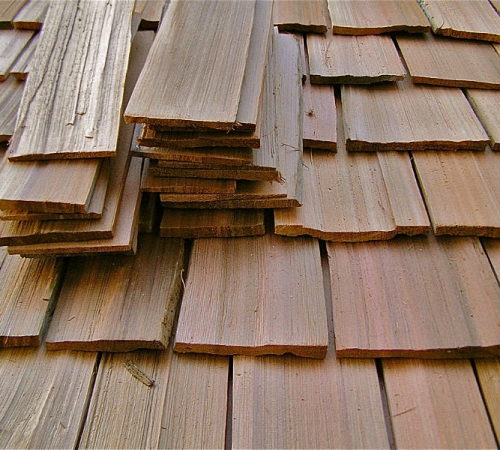
Tipping a gable roof
Even the most ideal roofing material will not look if the decoration of the roof elements is not completed: pipes, cornices, pediments, overhangs. Next, we will consider each of the stages in detail. Each of the stages has its own nuances:
- for lining of overhangs, it is necessary to use a long material;
- the use of siding with sofitis allows you to do a little cutting and, thanks to perforation, the surface can breathe;
- for the binder, it is recommended to use long vinyl siding;
- to work on the roof, it is important to build reliable forests at a level convenient for work;
- on the gables, siding is often placed vertically;
- to work at a height, you should use the help of another person.
Work on the trim of the roof with vinyl siding can be carried out on their own, it is necessary to listen to the recommendations and not forget about safety precautions.
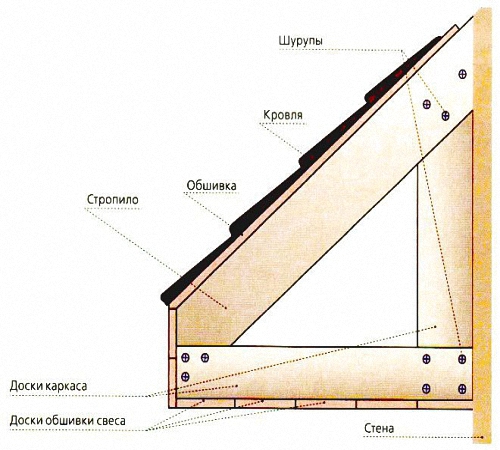
DIY roof cornices finish
Vinyl siding is used for roofs most often. It has a number of advantages:
- relatively inexpensive material;
- high quality;
- sufficient density;
- Breathing elements.
Siding stripes are three four meters panels with locks along the edges. Sofites are located on the surface of the material:
- with perforation for air movement;
- with lack of perforation for air exchange.
For decoration of cornices, the first option is the most acceptable, especially if the perforation is solid. There are recommendations that must be taken into account when working with vinyl material.
- store vinyl stripes should be in a place protected from light, in a temperature regime no higher than sixty degrees;
- panels should be laid in a horizontal direction;
- when mounted, it is forbidden to mechanically affect the panel;
- sofitis is fixed using screws;
- it is not recommended to screw them tightly;
- it is not advisable to use sealants;
- work with siding must be carefully to exclude damage to the material.
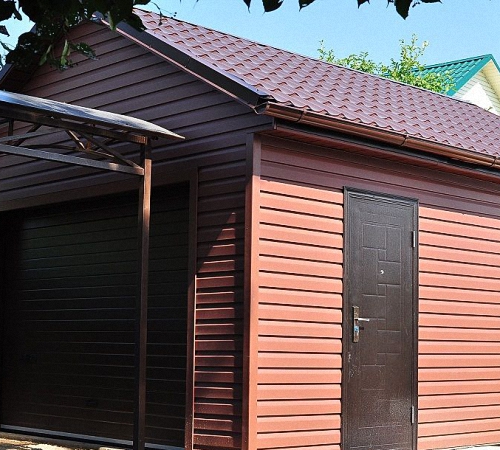
Overhangs or areas of the lower edge of the roof requires a bell. This will help protect the roof itself from damage by strong gusts of wind, will also give the appearance of the dwelling of comfort and beauty. The sheathing of the overhangs is carried out after the decoration of the facade and laying of the roofing material are completed. The sealing of the overhang will interfere with free air ventilation, but if you leave this place not heated, rodents can start, birds to settle in massively or insects start.
The finish under the roof is an important process, without this the appearance of the house will be imperfect and not finished.
In order not to influence the ventilation system, you should pick up cornices with small gaps. You can make a ventilation system like this:
- leaving small distances between the cornice and vinyl stripes, as a rule, a gap of up to one and a half centimeters is recommended;
- carry out decoration with sophite panels;
- apply perforated panels.
With your own hands, finishing the cornice of the roof is possible even without experience, with the help of an assistant it is possible to do this work with your own hand, without involving construction brigades.
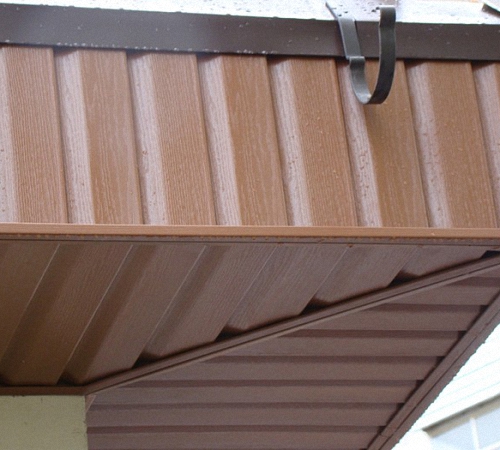
The decoration of the frontboard of the roof
You can carry out the casing of the pediment after the end of the lining of the entire structure, or it is possible during the construction of the roof.
Even one who has never done anything like that can make a frontboard trim. It is simply necessary an assistant who cuts the material and serves, or accepts the material at the top and shears the surface.
Before starting work, you should take care of security measures, work at altitude does not tolerate fuss and carelessness. Reliable forests will allow you to feel safety, which means you confidently do the necessary manipulations on the roof.
To carry out work on the lining of the facade, it is necessary to stock up on the right tool:
- bars;
- meter;
- corner;
- strips;
- siding strings;
- screwdriver;
- jigsaw;
- self -tapping screws.

The calculation of the material is an important point, but it is not difficult to produce them for the pediment: the height of the roof is multiplied by the width and is divided in half. For this kind of work, you can use metal, vinyl or basement. Vinyl siding for lining the pediment has delicate shades of colors. As for the metallic, it has a huge color palette, and the guaranteed operating time reaches more than fifty years. The basement material is much thicker than vinyl and stronger. So the master independently decides which type of siding to choose. Vinyl is preferable, since working with it is easier, which means that the process of sheathing will pass faster, it costs less than the rest.
To begin with, it is necessary to insulate the pediment. This is done for balancing temperatures in the winter, when they are low, and in the summer, with exhausting heat. Most often use mineral wool and polystyrene. You can do work on insulation not only from the outside. Insulation from the inside has a large number of advantages. For the decoration of the pediment, it is first necessary to prepare the crate. All structural elements must be well screwed and fixed. It is necessary to check how smoothly one part lies to the other, since vinyl strips or other facing material can easily be attached to the flat surface.
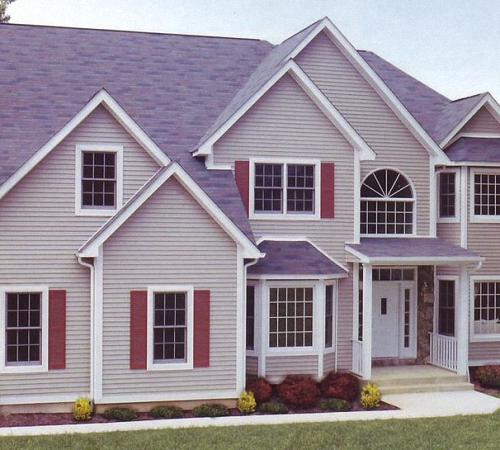
Finishing under the roof
If the decoration of all roof elements is made, you should not miss the area under it. This will create a beautiful completed image of the dwelling and will be an additional protection against heat leakage, insect penetration. Under the roof design, Jay must be attached to a figurative profile. The procedure can be described as follows:
- it is necessary to measure the distances between the parts of the locks;
- from the result we remove about two millimeters of the retreat;
- apply marking into the strip and cut off the part where the locks are located;
- every twenty centimeters, hooks are created, incisions bend on the front side;
- we insert a fragment in the penultimate panel, close the lock in profiles.
Stamping of the chimney on the roof
It is necessary to finish the chimney on the roof at the end of the roofing. Not only the appearance of the roof, the aesthetic side, but also the protection of the structure from birds, adverse environmental conditions, depend on the quality of the finish of the chimney. If you do not do everything as it should, rains, snow and wind will quickly shorten the service life of the structure as a whole.
The finish of the chimney can conditionally be divided into the following stages:
- interior decoration before reaching the attic;
- also interior finish is the attic section before the roof;
- outdoor finish zone of the roof.
The first two stages are important, but not as significant as the last stage of finishing work on the roof. This section is exposed to precipitation, winds, experiences high temperatures from the inside and significant changes in the cold season.
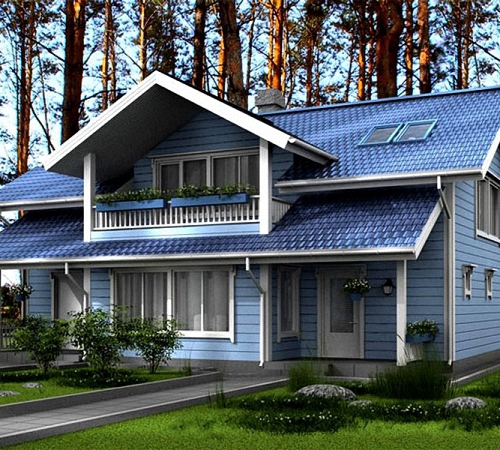
The finish of the chimney combines work with the base, the surface of the pipe, the place of the pipe entrance to the roof. Working with the base aims to ensure tightness and prevent the ingress of water or garbage inside. Pipe body decoration has an important goal to ensure heat conservation, reliability and attractive appearance. SAAM exit from the roof, the place of cutting into the roof material requires the protection of the holes from water, garbage.
The finish of the chimney requires the performance of the following actions:
- laying the roofing material around the pipe body;
- installation of the crate;
- we begin to lay facing material;
- all joints are treated with hermeters.

Tips for experienced builders
Like each work, the surface decoration with siding has certain subtleties that should be taken into account for the successful work:
- fasteners are inserted into the holes intended for this;
- it is impossible to screw the hats tightly to the base, a gap is left in case of surface distortion as a result of temperature fluctuations;
- the sheets are located horizontally, and the finish must be mounted clockwise, from the bottom up;
- it is impossible to punch holes in the siding panel, this can shorten the service life of the material, this option of siding (vinyl) is attached only to the gaps intended for fasteners.
Vinyl siding is distinguished by the ability to absorb heat, is not afraid of temperature changes, is not subject to corrosion and insect attacks, durable and resistant to chemical elements.
It is possible to finish the roof with your own hands with the recommendations of experienced builders.
